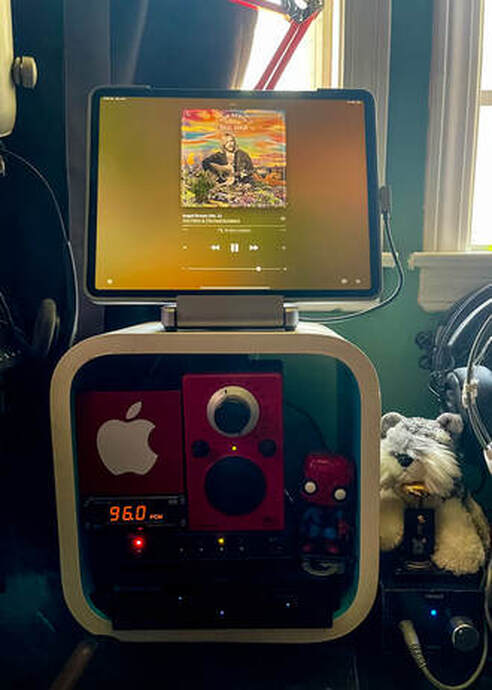Apple Music
- HomePods - we have three HomePods and they work best with Siri and Apple Music. Also, as a second feature it can be used with Apple Music to AirPlay Audio to other AirPlay 2 devices… play music in Den, Patio, etc.
- Carplay - Siri in the Jeep with great integration.
- Apple Watch - so cool to be able to control what my iPhone is playing or the Apple Watch is playing with just the watch. Of course, Siri is ideal for this implementation.
- Amazon Dot - I have a few of these and they work with Apple Music.
- AppleTV - my receiver will switch to stereo for two channel audio and to Atmos for multichannel with Apple Music when a track is supported. It is really nice to have the lyrics available, too.
- iPhone/iPad - Hi Res audio with bit rate switching on the fly with an Apple Music via USB connector.
- Music Matching - I had my music backed up to iTunes Match at one point and now the albums are available on Apple Music. Very nice feature when you own something Apple doesn’t have available.
Obviously, the main downside is the Mac app which has a lack of bit rate switching on the fly… but I use the iPad in its place these days.
Amazon Music
Let’s compare it to Qobuz. The monthly price for Qobuz is $12.99 ( cheaper if you want to pay for a year at a time, but I prefer having flexibility to change services). That’s currently $4 more per month than Amazon ( obviously, if you read this article down the road, prices could change). Secondly, no voice control with Alexa or Siri. We use that feature quite a bit, so this is another negative.
You can’t stream hi res from the app. There are workarounds like Roon, Audirvana, and LMS, however they require you to run a computer or server and often cost money (LMS is free, but doesn’t look as good as Roon or sound as good as Audirvana, in my opinion). Not ideal to need another computer and app in the mix anyway (I may write an article about my opinion on this aspect down the road).
Also, DLNA, which is what I used with LMS and Audirvana, was less reliable than Amazon Casting with jitters and other issues being more prevalent. Also, it took longer to connect and play on some of my receivers for some reason. The head of Roon discusses in great depth why he doesn't support DLNA, which is more harsh than my statements, but to say it is just less reliable and speedy when compared to Amazon Casting is just fact in my experience. I should mention that Amazon Casting supports up to 24/192, while Chromecast Casting (at least in my experience) is limited to 24/96.
For DLNA and LMS (Logitech Media Server) I was using an old iMac to run the server and I would always be annoyed when we had an electric outage and I would have to spend time restarting the old computer just to stream music.
If I listened to most music from a computer, I may have kept Qobuz, but when the post-COVID world opened up, I spent less and less time in my home office. I have a similar, just as useful setup with my iPads and since it doesn’t have to use the computer processor, I get a bit extra processing reserved for the task at hand when using my Mac Mini. Also, Qobuz has no Spatial Audio/Atmos or an AppleTV App. I know some don't care about Dolby Atmos, but then again, I have to think that most critics just haven't heard it in decent setup with a decent mix.
I am not saying my needs and preferences are universal. If you spend most of your music listening time in front of a computer and/or want to use third party software in the mix, Qobuz is hard to beat. In that respect, its only competitor is Tidal and I preferred Qobuz when I compared them.
Honestly, the main reason I had Qobuz was hi res audio. Now both Amazon and Apple provide that, so the need for Qobuz was removed.

 RSS Feed
RSS Feed